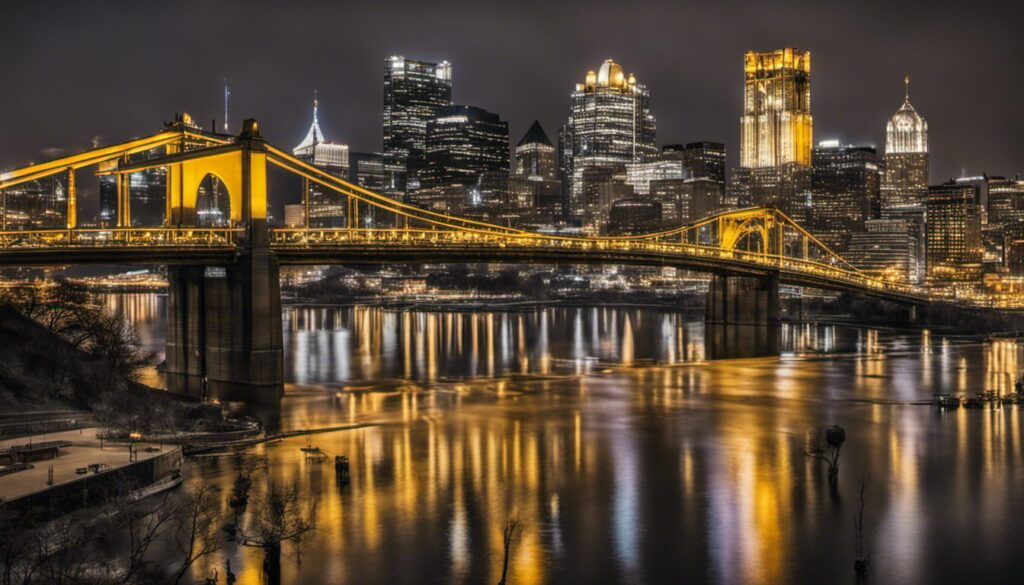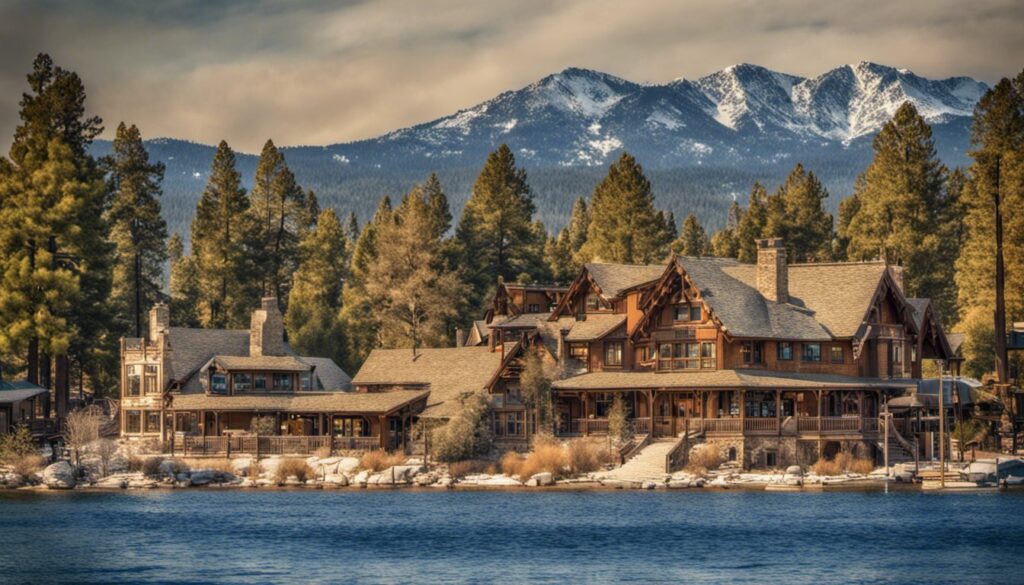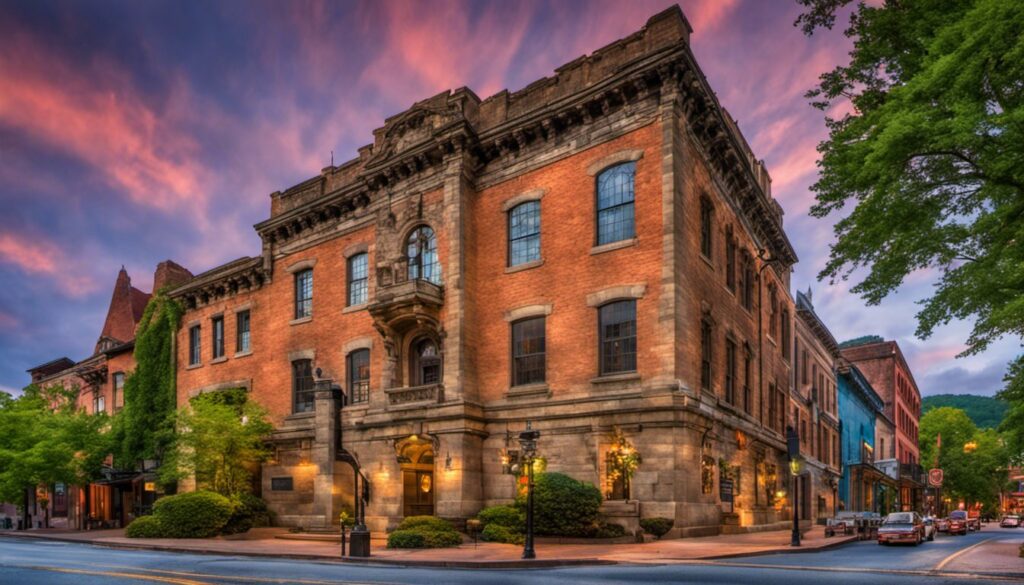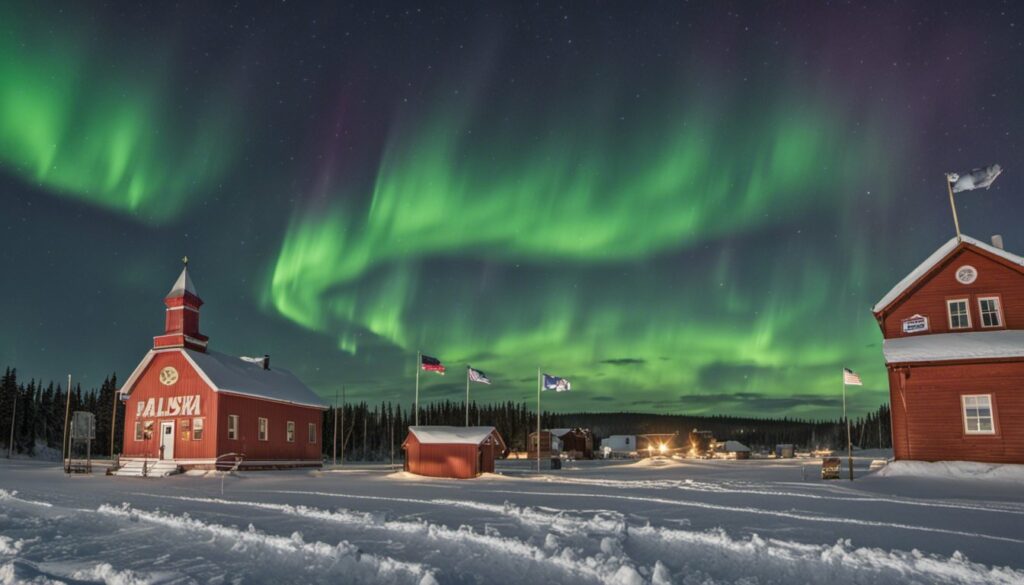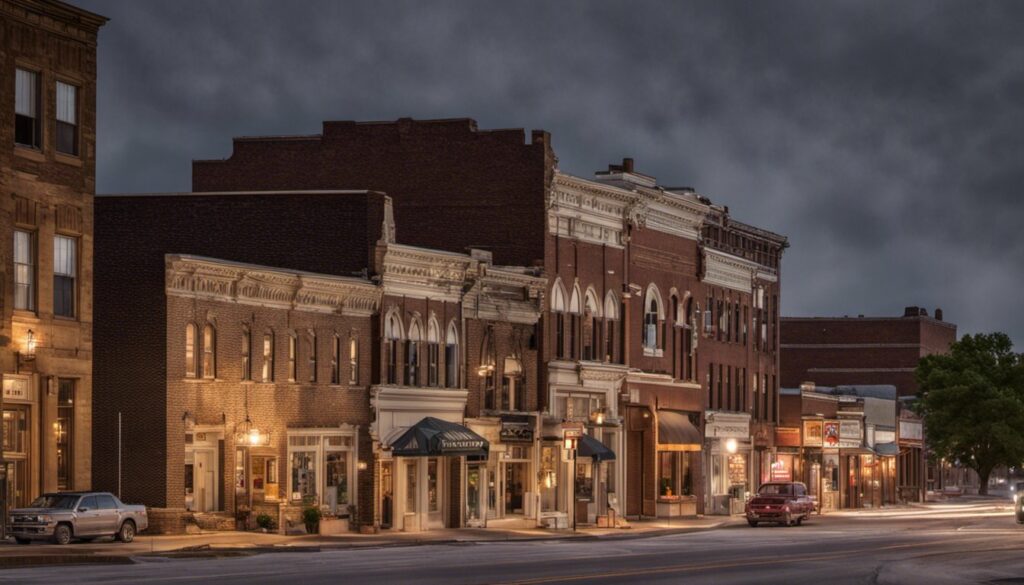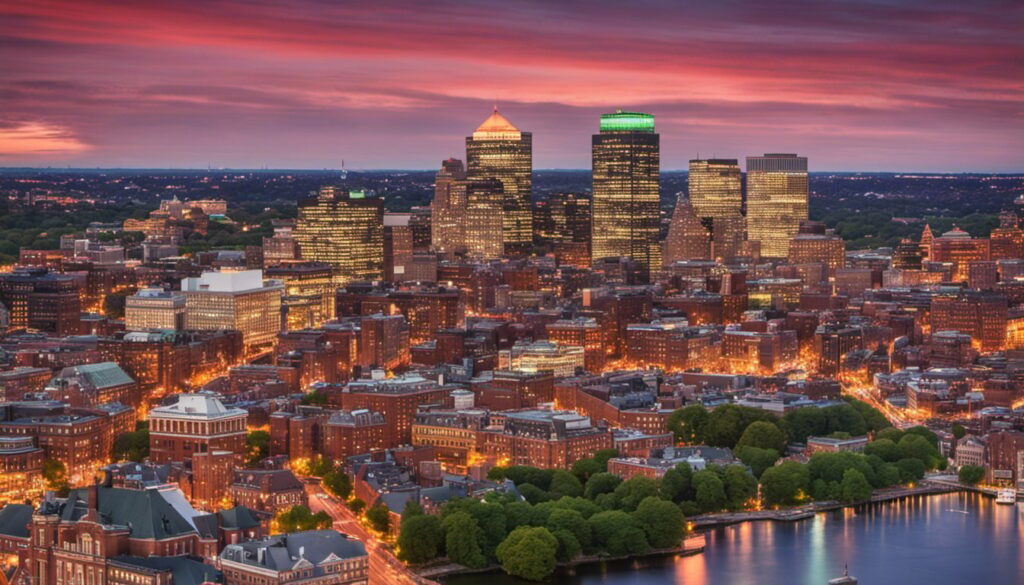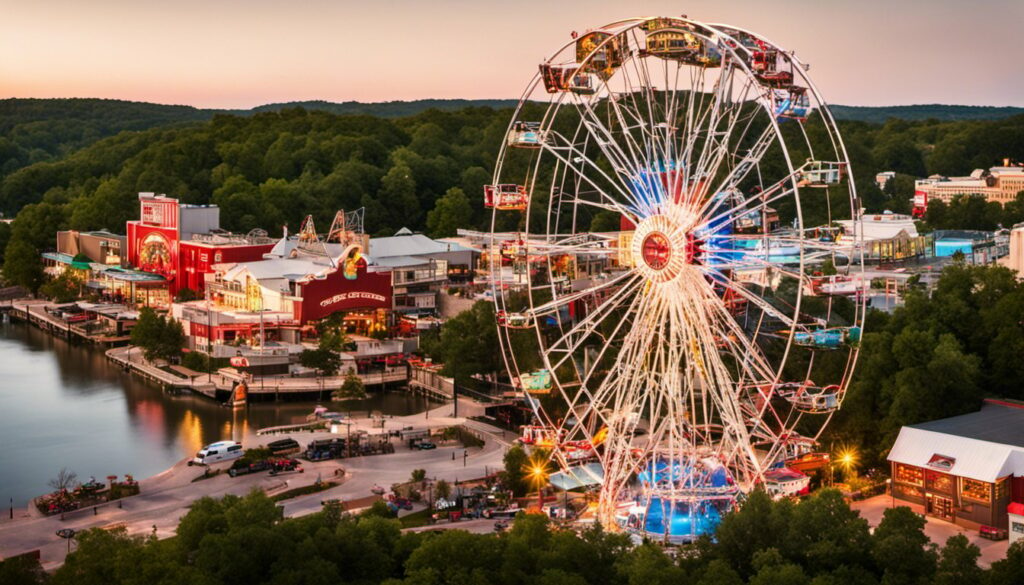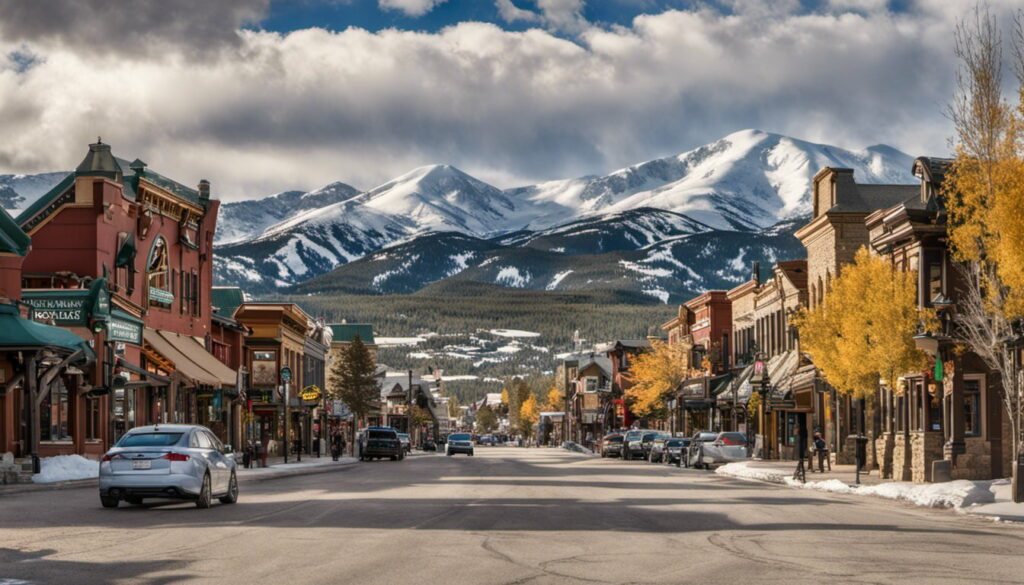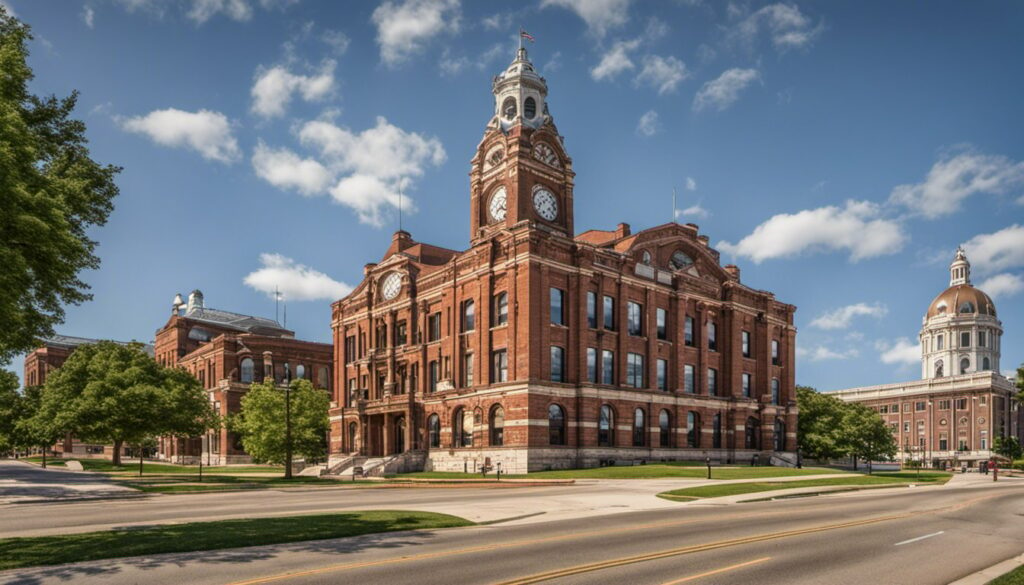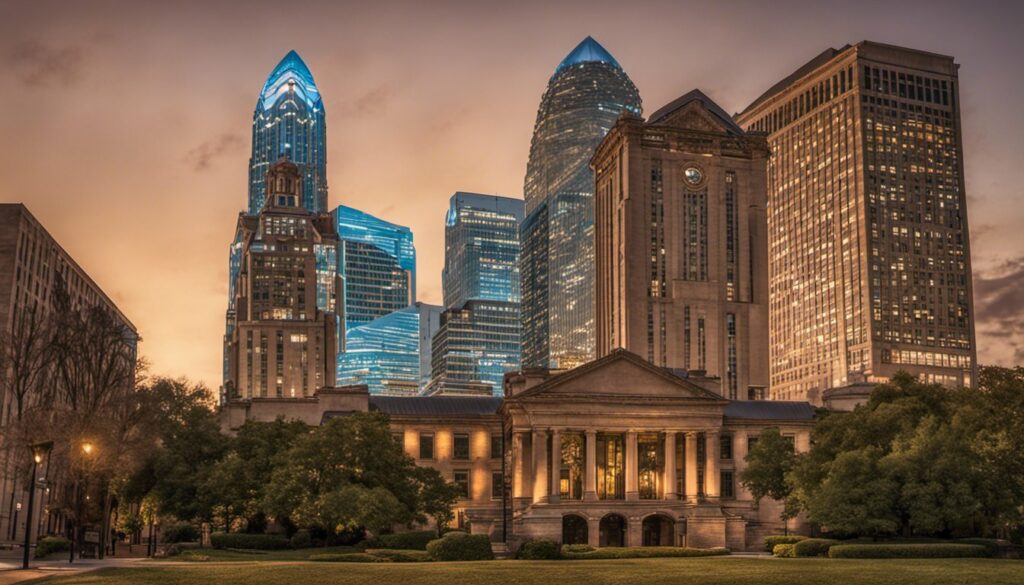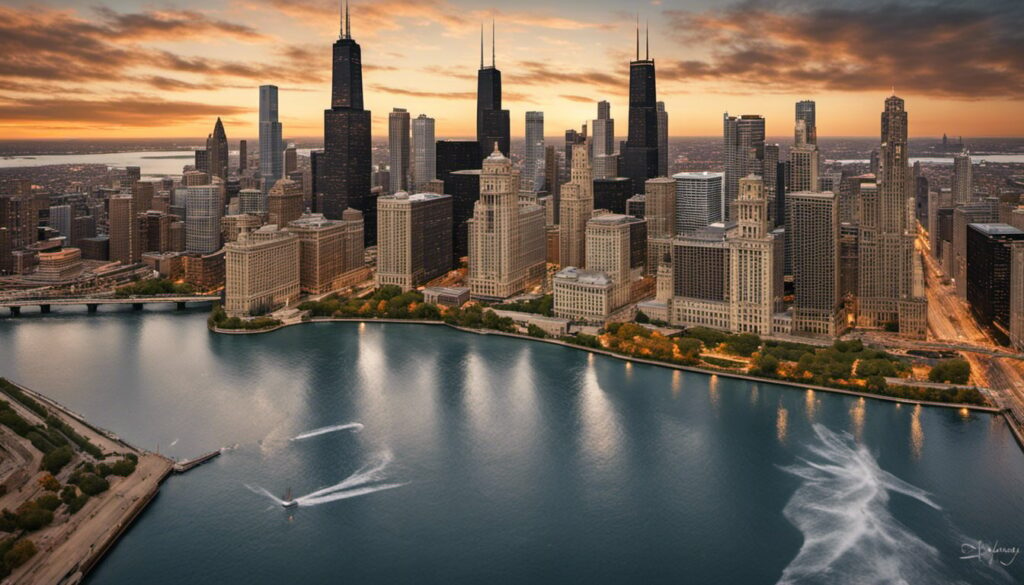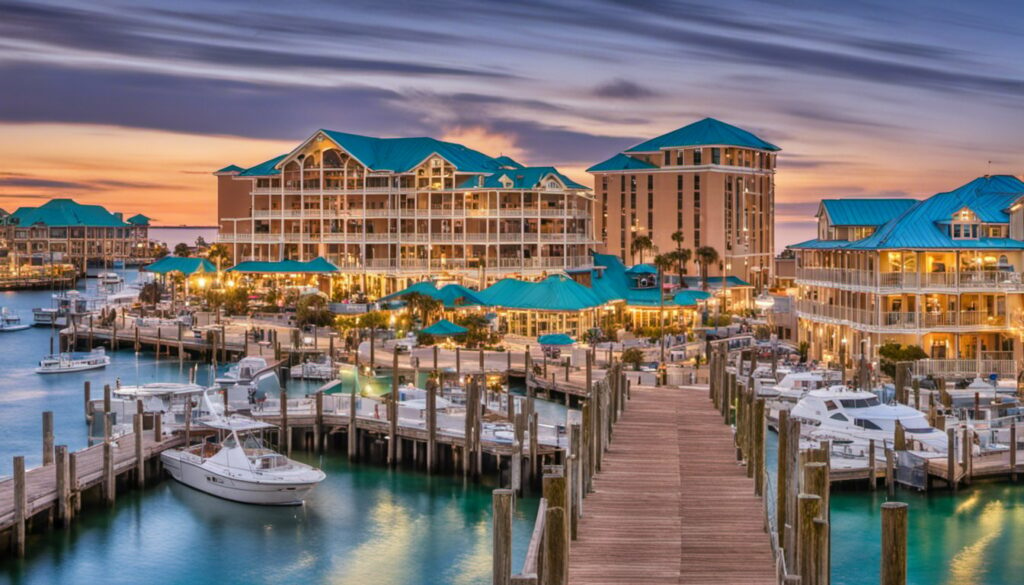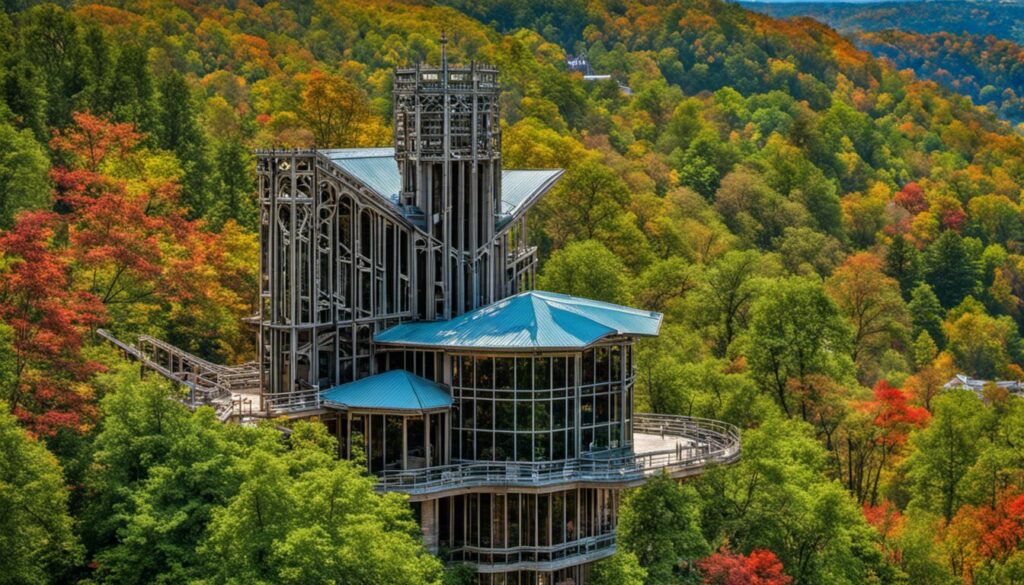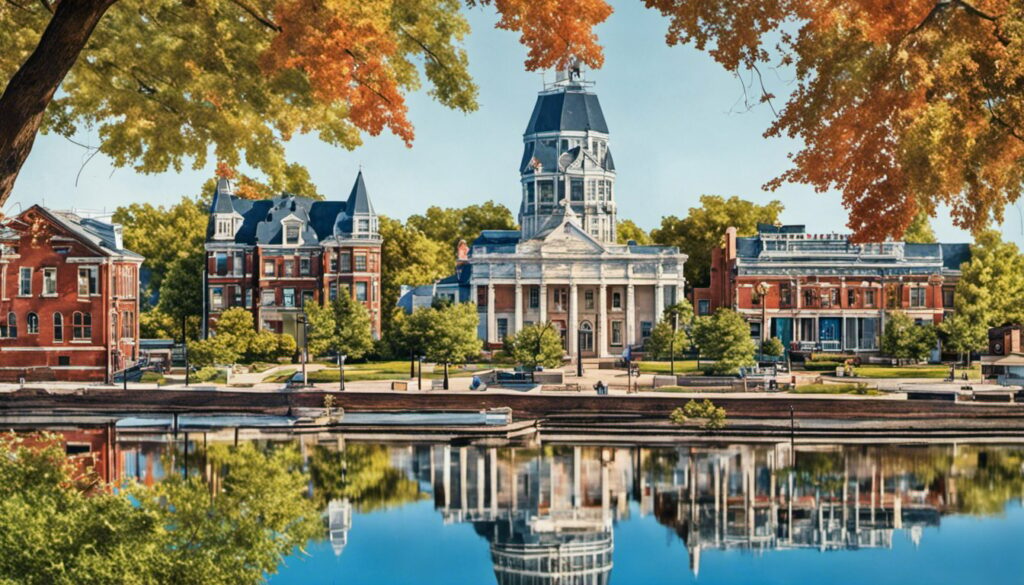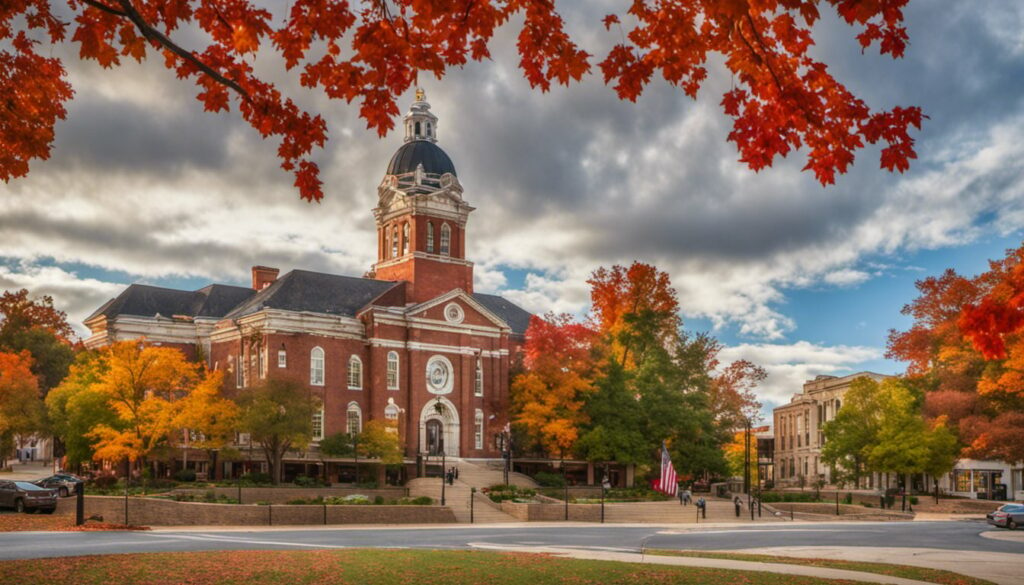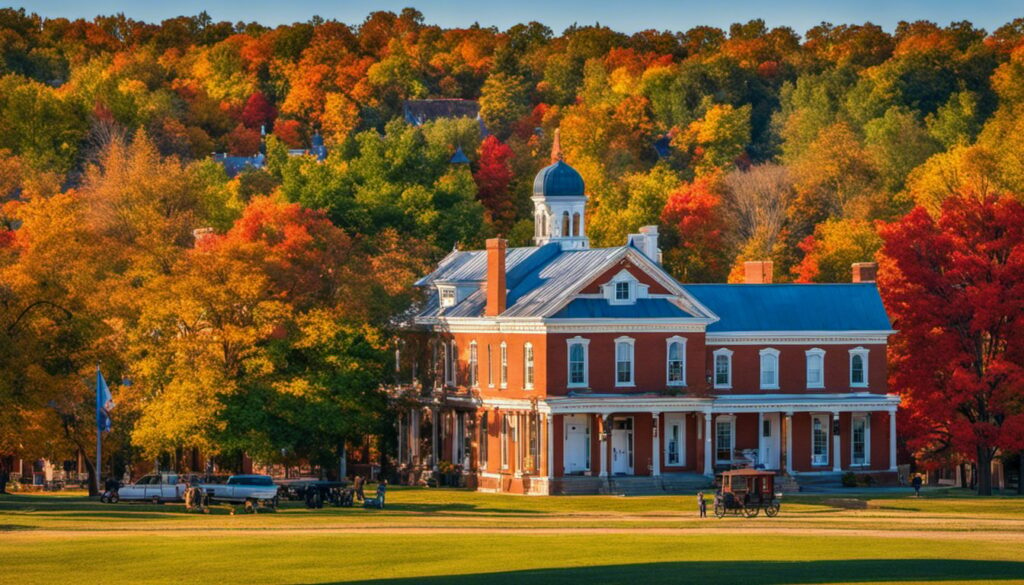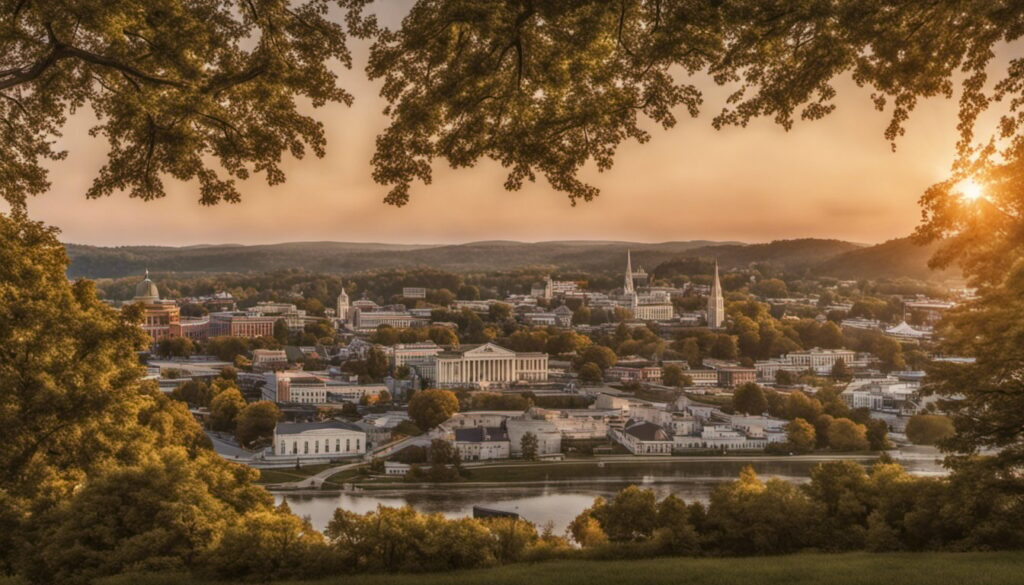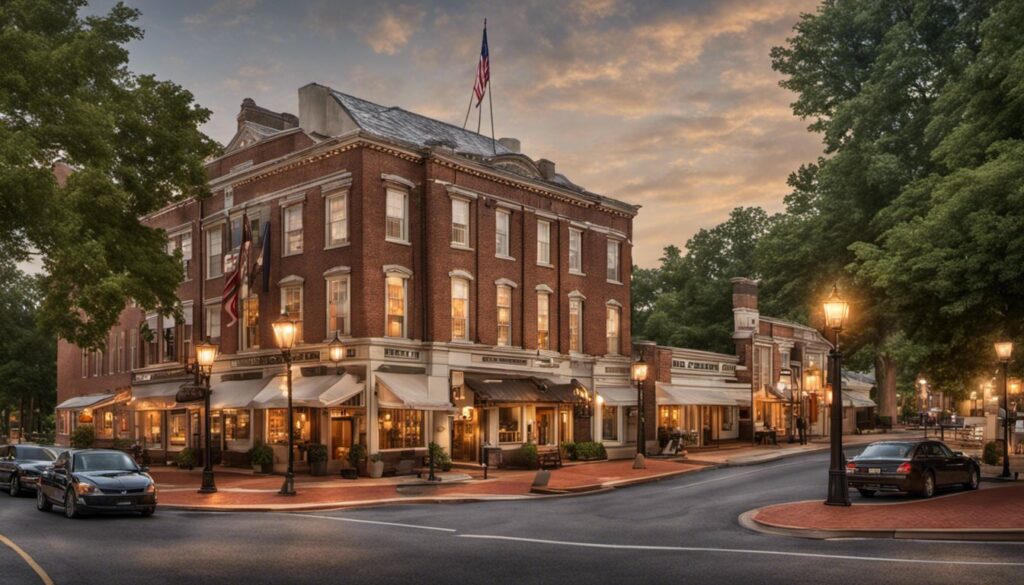Table Of Content
- Explore Pittsburgh’s Rich History: A Listicle of Famous Landmarks and Historical Sites
- Historical Significance of Pittsburgh
- Famous Landmarks
- Historical Districts
- Historical Events
- Historical Figures
- Pittsburgh’s Industrial History
- Historical Sites on the National Register
- Cemeteries and Memorials
- Art and Culture
- Conclusion
- Frequently Asked Questions
Explore Pittsburgh’s Rich History: A Listicle of Famous Landmarks and Historical Sites
Pittsburgh, Pennsylvania, is a city steeped in rich history and culture. From its industrial past to its famous landmarks and historical sites, Pittsburgh has something to offer anyone interested in exploring the past. Whether you are a history buff or just looking for a fun day out, Pittsburgh has plenty of options to choose from.
One of the most significant aspects of Pittsburgh’s history is its role in the industrial revolution. As one of the largest steel producers in the world, Pittsburgh played a vital role in shaping the modern world. Today, visitors can explore many of the city’s old factories and mills, which have been repurposed into museums and cultural centers. Additionally, Pittsburgh is home to several historical districts, including the Mexican War Streets and the Allegheny West Historic District, which offer a glimpse into the city’s past.
If you’re interested in exploring Pittsburgh’s historical sites and famous landmarks, there are plenty of options to choose from. Whether you want to visit the Andy Warhol Museum, explore the Point State Park, or take a tour of the National Aviary, there is something for everyone. With so much to see and do, Pittsburgh is an excellent destination for anyone interested in exploring the past.
Key Takeaways
- Pittsburgh has a rich history and culture that is reflected in its famous landmarks and historical sites.
- The city played a significant role in the industrial revolution, and visitors can explore many of its old factories and mills.
- Pittsburgh offers plenty of options for exploring its history, including museums, cultural centers, and historical districts.
Historical Significance of Pittsburgh
Pittsburgh, Pennsylvania, is a city with a rich history that spans centuries. From the Native American civilizations that once inhabited the region to the city’s role in the French and Indian War, the Revolutionary War, and the American Civil War, Pittsburgh has played a significant part in the history of the United States.
In the early days, Pittsburgh was known for its strategic location at the confluence of the Allegheny and Monongahela rivers, making it an important hub for trade and transportation. The city’s abundant natural resources, including coal and iron, helped fuel the Industrial Revolution, and by the late 19th century, Pittsburgh had become a major center for steel production.
During the Civil War, Pittsburgh played a critical role in supplying the Union Army with weapons and ammunition. The city’s iron mills and foundries produced everything from cannons to railroad tracks, helping to turn the tide of the war in favor of the Union.
Today, Pittsburgh is home to many historic landmarks and sites that offer a glimpse into the city’s storied past. From the Fort Pitt Blockhouse, the oldest surviving structure in Western Pennsylvania, to the Heinz History Center, which chronicles the city’s history from its earliest days to the present, there is no shortage of places to explore and learn about Pittsburgh’s rich heritage.
Whether you’re a history buff or simply interested in learning more about the city’s past, Pittsburgh is a fascinating destination that offers a wealth of opportunities to explore and discover.
Famous Landmarks
Pittsburgh, Pennsylvania is home to many famous landmarks that are steeped in history. From forts to museums, churches to libraries, these landmarks have played a significant role in shaping the city’s past and present. Here are some of the most famous landmarks in Pittsburgh that you simply must visit:
Fort Pitt
Fort Pitt is a historic landmark located at the confluence of the Allegheny and Monongahela Rivers. It was built in 1758 by the British during the French and Indian War. Today, the fort serves as a museum and is a popular tourist destination.
Henry Clay Frick House
The Henry Clay Frick House is a historic landmark located in the Point Breeze neighborhood of Pittsburgh. The house was built in 1882 and belonged to Henry Clay Frick, a prominent industrialist and art collector. Today, the house serves as a museum and is open to the public.
Carnegie Library
The Carnegie Library is a historic landmark located in the Oakland neighborhood of Pittsburgh. It was built in 1895 and is one of the first public libraries in the United States. The library is known for its stunning architecture and extensive collection of books.
Allegheny Observatory
The Allegheny Observatory is a historic landmark located in the Riverview Park neighborhood of Pittsburgh. It was built in 1859 and is one of the oldest astronomical observatories in the United States. The observatory is open to the public and offers tours and stargazing events.
Point State Park
Point State Park is a historic landmark located at the tip of Pittsburgh’s Golden Triangle. It was built in 1974 and is home to the iconic fountain that shoots water 150 feet into the air. The park is a popular spot for picnics, concerts, and other outdoor activities.
Fort Duquesne
Fort Duquesne is a historic landmark located in Point State Park. It was built in 1754 by the French and was later captured by the British during the French and Indian War. Today, the fort serves as a museum and is open to the public.
Cathedral of Learning
The Cathedral of Learning is a historic landmark located on the campus of the University of Pittsburgh. It was built in 1930 and is one of the tallest educational buildings in the world. The cathedral is known for its stunning Gothic architecture and is open to the public.
Heinz Memorial Chapel
The Heinz Memorial Chapel is a historic landmark located on the campus of the University of Pittsburgh. It was built in 1938 and is known for its stunning stained glass windows and intricate stone carvings. The chapel is open to the public and hosts weddings and other events.
Korean War Memorial
The Korean War Memorial is a historic landmark located in the North Shore neighborhood of Pittsburgh. It was built in 1999 and is dedicated to the soldiers who fought in the Korean War. The memorial is open to the public and is a popular spot for reflection and remembrance.
Allegheny County Courthouse
The Allegheny County Courthouse is a historic landmark located in the downtown area of Pittsburgh. It was built in 1888 and is known for its stunning architecture and intricate stone carvings. The courthouse is open to the public and offers tours.
Andy Warhol Museum
The Andy Warhol Museum is a historic landmark located in the North Shore neighborhood of Pittsburgh. It was built in 1994 and is dedicated to the life and work of the famous artist Andy Warhol. The museum is home to the largest collection of Warhol’s artwork and is open to the public.
In conclusion, Pittsburgh is home to many famous landmarks that are steeped in history. These landmarks offer a glimpse into the city’s past and present and are a must-visit for anyone interested in history and architecture.
Historical Districts
Pittsburgh is home to several historical districts that are worth exploring. Here are some of the most notable ones:
North Shore
The North Shore is a popular destination for sports fans, as it is home to both PNC Park and Heinz Field. However, it is also steeped in history. One of the most notable landmarks in the area is the Fort Pitt Block House, which is the oldest building in Pittsburgh. It was built in 1764 and served as a defensive structure during the French and Indian War. Today, it is a museum that offers a glimpse into Pittsburgh’s past.
Strip District
The Strip District is a vibrant neighborhood that is known for its food, shopping, and nightlife. However, it also has a rich history. The area was once home to many of Pittsburgh’s industries, including steel and coal. Today, many of the old factories and warehouses have been converted into shops, restaurants, and galleries. The Senator John Heinz History Center is also located in the Strip District, which is a museum that explores the history of Western Pennsylvania.
Schenley Park
Schenley Park is a beautiful park that is located in the heart of Pittsburgh. It was designed by Frederick Law Olmsted, who is also responsible for designing New York’s Central Park. The park is home to several notable landmarks, including the Phipps Conservatory and Botanical Gardens and the Schenley Park Cafe and Visitor Center. It is also home to several trails and hiking paths that offer stunning views of the city.
Allegheny West Historic District
The Allegheny West Historic District is a neighborhood that is located on Pittsburgh’s North Side. It is known for its Victorian-era architecture, which includes many mansions and grand homes. One of the most notable landmarks in the area is the Holmes Hall, which was built in 1892 and is now home to the Pittsburgh Symphony Orchestra.
Mount Washington
Mount Washington is a neighborhood that is located on a hill overlooking downtown Pittsburgh. It is known for its stunning views of the city, which can be seen from the Duquesne Incline and the Monongahela Incline. The area is also home to several historic landmarks, including the Monongahela Incline, which was built in 1870 and is one of the oldest funiculars in the country.
Hill District
The Hill District is a neighborhood that is located just east of downtown Pittsburgh. It is known for its rich African American history, which includes the contributions of many notable musicians, writers, and artists. The area is also home to several historic landmarks, including the Crawford Grill, which was a popular jazz club in the 1940s and 1950s.
Point Breeze
Point Breeze is a neighborhood that is located in the eastern part of Pittsburgh. It is known for its beautiful homes and tree-lined streets. The area is also home to several historic landmarks, including the Clayton Mansion, which was the home of industrialist Henry Clay Frick. Today, it is a museum that offers a glimpse into the life of one of Pittsburgh’s most influential citizens.
Overall, Pittsburgh is a city that is steeped in history. Whether you are interested in sports, food, or architecture, there is something for everyone to explore in the city’s many historic districts.
Historical Events
Pittsburgh has a rich history, and many significant historical events have taken place in the city. Here are some of the most notable events that have shaped Pittsburgh’s history:
French and Indian War
The French and Indian War was a significant event in the history of Pittsburgh. The war began in 1754, and Pittsburgh played a crucial role in the conflict. The city was strategically located at the junction of the Allegheny and Monongahela Rivers, making it a valuable location for both sides.
Civil War
The Civil War was a turning point in American history, and Pittsburgh played a significant role in the conflict. The city was a hub of industry and manufacturing, and it provided critical support to the Union Army. Pittsburgh produced weapons, ammunition, and other supplies that were crucial to the war effort.
Whiskey Rebellion
The Whiskey Rebellion was a significant event in the history of Pittsburgh. The rebellion began in 1791 when farmers in western Pennsylvania rebelled against a tax on whiskey. The rebellion was eventually put down by the federal government, but it had a lasting impact on the region.
American Civil War
The American Civil War was a defining moment in American history, and Pittsburgh played a crucial role in the conflict. The city was a hub of industry and manufacturing, and it provided critical support to the Union Army. Pittsburgh produced weapons, ammunition, and other supplies that were crucial to the war effort. The city was also a stop on the Underground Railroad, and many slaves were able to escape to freedom through Pittsburgh.
Overall, Pittsburgh’s history is rich and diverse, and the city has played a crucial role in many significant historical events. Whether you’re interested in the French and Indian War, the Civil War, the Whiskey Rebellion, or the American Civil War, Pittsburgh has something to offer.
Historical Figures
Pittsburgh has been home to many famous historical figures, each of whom has left a lasting impact on the city. Here are a few of the most notable:
Andrew Carnegie
You can’t talk about Pittsburgh’s history without mentioning Andrew Carnegie. Born in Scotland in 1835, Carnegie moved to Pittsburgh with his family when he was just a child. He went on to become one of the wealthiest men in the world, thanks to his success in the steel industry. Carnegie is perhaps best known for his philanthropy, which included the creation of the Carnegie Library system, as well as numerous other charitable endeavors.
Henry Clay Frick
Another prominent figure in Pittsburgh’s steel industry was Henry Clay Frick. Frick was born in Pennsylvania in 1849 and went on to become a powerful businessman, eventually partnering with Andrew Carnegie. However, Frick’s legacy is often overshadowed by his role in the infamous Homestead Strike of 1892, in which he played a key role in breaking the strike and suppressing the workers’ demands.
August Wilson
August Wilson was a Pulitzer Prize-winning playwright who spent much of his life in Pittsburgh. Born in 1945, Wilson grew up in the Hill District neighborhood of Pittsburgh, which would later serve as the setting for many of his plays. Wilson’s work often explored themes of African American life and culture, and his plays continue to be performed around the world to this day.
Rachel Carson
Rachel Carson was a marine biologist and conservationist who was born in Pennsylvania in 1907. Although she did not spend her entire life in Pittsburgh, she did attend college at what is now Chatham University in the city. Carson is perhaps best known for her book “Silent Spring,” which helped to launch the modern environmental movement and led to the banning of the pesticide DDT.
These are just a few of the many historical figures who have helped to shape Pittsburgh’s rich history. From industrialists to artists to activists, each of these individuals has left a lasting impact on the city and its people.
Pittsburgh’s Industrial History
Pittsburgh’s industrial history is a fascinating story that has shaped the city’s identity. The city was once known as the “Steel City” due to its prominence in the steel industry during the 19th and 20th centuries. It was the center of the steel industry in the United States and produced a significant portion of the country’s steel.
The city’s industrial history began in the mid-19th century with the discovery of iron ore in the nearby hills. Soon after, Pittsburgh became a hub for iron production, and its location at the confluence of three rivers made it an ideal location for transportation and shipping. The city became a major industrial center during the Industrial Revolution, producing steel, iron, and other goods.
The steel industry in Pittsburgh reached its peak in the early 20th century, and the city was home to some of the largest steel mills in the world. The industry was a major employer in the city, and many families depended on it for their livelihoods. The steel industry also had a significant impact on the city’s culture, and the Pittsburgh Steelers football team is named after the industry that once dominated the city.
Today, many of the steel mills in Pittsburgh have closed, and the city has undergone significant changes. However, the city’s industrial history is still evident in many of its landmarks and historical sites. The Carrie Blast Furnace, for example, is a striking post-industrial wasteland and a poignant reminder of Pittsburgh’s rusted past. The furnace, which was constantly churning, pumping out iron until 1978, when it closed for good, is now a National Historic Landmark.
In conclusion, Pittsburgh’s industrial history is a fascinating story that has shaped the city’s identity. The city’s prominence in the steel industry during the 19th and 20th centuries had a significant impact on its culture and economy. Today, many of the city’s landmarks and historical sites reflect its industrial past, and visitors can still see the remnants of the city’s steel mills and factories.
Historical Sites on the National Register
Pittsburgh is home to many historical sites that are registered on the National Register of Historic Places. These sites are recognized for their historical significance and are protected by the National Park Service. Here are some of the most notable historical sites in Pittsburgh:
- Bost Building: The Bost Building is a historic commercial building located in downtown Pittsburgh. It was built in 1902 and was one of the first steel-framed skyscrapers in the city. The building is named after its original owner, Henry W. Bost, who was a prominent businessman in Pittsburgh. Today, the Bost Building is home to a variety of businesses and is a popular destination for tourists.
- Allegheny County Courthouse: The Allegheny County Courthouse is a historic courthouse located in downtown Pittsburgh. It was built in 1888 and is known for its distinctive Romanesque Revival architecture. The courthouse is still in use today and is home to the Allegheny County Court of Common Pleas.
- Carnegie Library of Pittsburgh: The Carnegie Library of Pittsburgh is a historic library system that was founded by Andrew Carnegie in 1895. The library system has 19 locations throughout Pittsburgh and is known for its extensive collection of books and other materials. The main branch of the library is located in the Oakland neighborhood and is a popular destination for visitors.
- Cathedral of Learning: The Cathedral of Learning is a historic landmark located on the campus of the University of Pittsburgh. It was built in 1930 and is known for its distinctive Gothic Revival architecture. The building is the tallest educational building in the Western Hemisphere and is home to classrooms, offices, and other facilities.
These are just a few of the many historical sites that are registered on the National Register of Historic Places in Pittsburgh. If you’re interested in history, be sure to check out these sites and learn more about the city’s rich past.
Cemeteries and Memorials
Pittsburgh is home to several cemeteries and memorials that hold great historical significance. Here are some of the most notable ones:
Allegheny Cemetery
Located in the Lawrenceville neighborhood, the Allegheny Cemetery is one of the largest and oldest burial grounds in Pittsburgh. It is a historic rural cemetery that spans over 300 acres and is the resting place of over 124,000 people, including soldiers who fought in the historic French and Indian War between 1754 and 1763. The cemetery was listed on the National Register of Historic Places in 1980 and is on the Pittsburgh History & Landmarks Foundation register.
The Allegheny Cemetery is known for its beautiful and serene landscape, which features rolling hills, winding paths, and a variety of trees and shrubs. The cemetery is also home to several notable monuments and memorials, including the Soldiers’ and Sailors’ Memorial, which honors the veterans of the Civil War, and the Stephen Foster Memorial, which pays tribute to the famous composer.
Homewood Cemetery
Located in the Squirrel Hill neighborhood, the Homewood Cemetery is another historic burial ground in Pittsburgh. It was established in 1878 and is the final resting place of many notable Pittsburgh residents, including Andrew Carnegie, Henry Clay Frick, and Stephen Foster. The cemetery is known for its beautiful and well-maintained landscape, which features a variety of trees, shrubs, and flowers.
The Homewood Cemetery is also home to several notable monuments and memorials, including the Homewood Cemetery Soldiers’ Memorial, which honors the veterans of the Civil War, and the Homewood Cemetery Chapel, which was designed by the famous architect Frederick J. Osterling.
Veterans Memorial
The Veterans Memorial is located in the North Shore neighborhood of Pittsburgh and honors the veterans of all wars. The memorial consists of a large bronze statue of a soldier, which stands atop a granite pedestal. The statue was designed by the sculptor Paul Fjelde and was dedicated in 1928. The memorial is a popular spot for visitors to pay their respects and reflect on the sacrifices made by the brave men and women who served their country.
In conclusion, Pittsburgh is home to several cemeteries and memorials that hold great historical significance. Whether you are interested in the history of the Civil War, the lives of famous Pittsburgh residents, or the sacrifices made by our nation’s veterans, there is something for everyone to explore and discover in Pittsburgh’s cemeteries and memorials.
Art and Culture
If you’re a lover of art and culture, Pittsburgh has plenty to offer. From museums to historic landmarks, you’ll find something to pique your interest.
One of the most famous art museums in Pittsburgh is the Andy Warhol Museum. Dedicated to the life and work of the legendary pop artist, the museum houses an extensive collection of Warhol’s paintings, prints, photographs, and other artwork. You’ll also find exhibits featuring other contemporary artists, as well as educational programs and events.
Another must-visit destination for art enthusiasts is the August Wilson House. This historic landmark was the childhood home of the Pulitzer Prize-winning playwright August Wilson. Today, the house has been restored and transformed into a cultural center that celebrates Wilson’s life and legacy. You can take a guided tour of the house, attend a performance or workshop, or simply explore the exhibits and archives.
In addition to these museums and landmarks, Pittsburgh is home to a thriving arts community. You’ll find galleries, theaters, and performance spaces throughout the city, showcasing the work of local and international artists. Whether you’re interested in contemporary art, theater, dance, or music, you’re sure to find something that speaks to you.
So if you’re looking for a dose of culture on your visit to Pittsburgh, be sure to check out these art and cultural destinations. From the iconic Andy Warhol Museum to the historic August Wilson House, you’ll discover a wealth of creativity and inspiration in this vibrant city.
Conclusion
Congratulations! You have just finished reading about some of the most iconic and historic landmarks in Pittsburgh, Pennsylvania. From the Old Allegheny County Jail to the Andy Warhol Museum, this city has something for everyone.
Whether you are a history buff, an art lover, or just looking for a fun day out, Pittsburgh has plenty to offer. You can explore the city’s rich history by visiting the National Register of Historic Places listings or take a stroll through Schenley Park to enjoy the natural beauty of the area.
Don’t forget to stop by the Heinz Memorial Chapel or the Soldiers and Sailors Memorial Hall and Museum to pay your respects to the brave men and women who have served our country.
If you’re a sports fan, you can catch a game at Acrisure Stadium or take a tour of the iconic Fort Pitt Block House. And of course, no visit to Pittsburgh would be complete without a trip to the famous Point State Park, where the Allegheny and Monongahela Rivers meet to form the Ohio River.
So what are you waiting for? Plan your trip to Pittsburgh today and discover all that this amazing city has to offer!
Frequently Asked Questions
What is the significance of Fort Pitt Block House?
Fort Pitt Block House is the oldest architectural landmark in Pittsburgh and is all that remains of Fort Pitt, one of the largest and most elaborate British forts, and a key defense in the French and Indian War. The Fort Pitt Block House is a testament to Pittsburgh’s rich history and is a must-see attraction for anyone interested in the city’s past.
What are some must-see landmarks in Pittsburgh?
Pittsburgh is home to many famous landmarks, including Heinz Memorial Chapel, Phipps Conservatory and Botanical Gardens, and the Andy Warhol Museum. Other must-see landmarks include the Soldiers and Sailors Memorial Hall and Museum, Schenley Park, and Station Square.
What is the history behind Point State Park?
Point State Park is a beautiful park located at the confluence of the Allegheny, Monongahela, and Ohio Rivers. The park is significant because it marks the spot where the French and British fought for control of the region during the French and Indian War. Today, Point State Park is a popular destination for locals and tourists alike, offering stunning views of the city and the rivers.
What is the Southwestern Pennsylvania World War II Memorial?
The Southwestern Pennsylvania World War II Memorial is a beautiful monument located in the heart of downtown Pittsburgh. The memorial honors the men and women from the region who served in World War II and features a large bronze statue of a soldier, as well as several plaques and inscriptions.
What are some famous buildings in Pittsburgh?
Pittsburgh is home to many famous buildings, including the Cathedral of Learning, the Frick Art & Historical Center, and the PPG Place. Other notable buildings include the Allegheny County Courthouse, the Union Trust Building, and the Carnegie Music Hall.
Where can I find information about Pittsburgh’s history and landmarks?
If you’re interested in learning more about Pittsburgh’s history and landmarks, there are many resources available to you. The Pittsburgh History & Landmarks Foundation is a great place to start, as they offer tours and educational programs focused on the city’s rich history. The Visit Pittsburgh website is also a great resource, offering information on attractions, events, and more.

